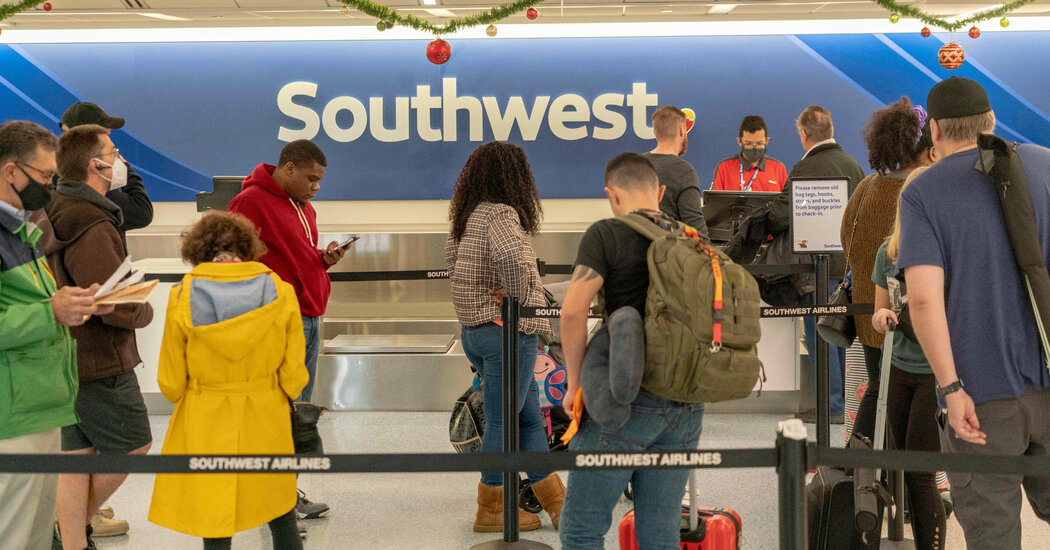Five days after severe winter weather wreaked havoc on holiday air travel across the United States, most major carriers are back up and running. Delta Air Lines, American Airlines and United Airlines each canceled fewer than 40 flights on Wednesday, according to FlightAware, a flight tracking service. Delta had the fewest with only 15 cancellations.
At Southwest, it was a very different story.
More than 2,500 flights, or 62 percent of its planned flights on Wednesday, had been canceled, according to FlightAware. And Southwest said in a statement on Wednesday that it planned to fly one third of its scheduled flights for the next several days as it tries to return to normal operations, meaning it would continue to cancel close to 2,500 flights a day. Some passengers, unable to rebook Southwest flights, rented cars or spent hundreds of dollars to buy tickets on other airlines.
So what caused the meltdown?
The “point-to-point” model failed
Southwest uses a “point-to-point” route model that often lets passengers fly directly from smaller cities and regions without having to stop at a central hub like Denver or New York. Point-to-point flights cut travel times by eliminating the intermediate stop — typically a big advantage for travelers who are not flying from major metro areas.
Other large carriers like United and American rely on a “hub-and-spoke” model in which planes typically fly from smaller cities to a hub airport where passengers change planes.
For example, a passenger flying on a United plane from Oklahoma City to Phoenix may have to stop in Denver for several hours. Southwest flies routes directly from Oklahoma City to Phoenix in less than three hours.
With a hub system, there’s a ready pool of crew members and pilots who can report to work at a major airport, said Mike Arnot, an industry analyst. That makes it easier to regroup after a storm, he said. Planes also are kept closer to their home airports, rather than being spread across the country.
It’s harder to have a reserve of standby crew members and pilots when airlines serve many smaller markets. There is not usually excess crew in places like Syracuse, N.Y., Mr. Arnot said.
As a result, Southwest’s cancellations created a giant snowball effect that rippled across its carefully choreographed network, leaving planes and crews scattered across the country, he and other analysts said.
“The only way to reset is to get the planes and crew back to where they should be,” Mr. Arnot…
Click Here to Read the Full Original Article at NYT > Travel…
